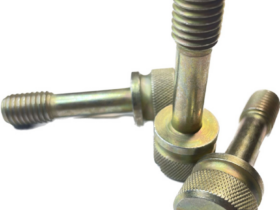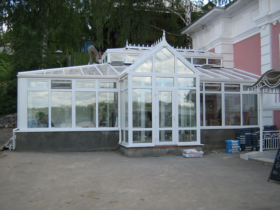Plastic panels became popular because they simply install them and then serve. And yet, before making a decision on their use for finishing ceilings in a bathroom or toilet room, you should look closely closer to them.
Advantages of plastic panels
Installation of panels
High-quality panels are not afraid of moisture: they are not deformed because of it, paint does not exfoliate from them, they do not grow molds, which is an undoubted advantage for rooms where humidity is increased.
Today you can find plastic panels of various colors. In addition, some of them have a complex pattern and look very rich, so it is easy to choose panels for various ceramic tiles or interior interior items.
They just mount them. All that is necessary is a perforator, an electric drill or a screwdriver, metal scissors or an angular grinding machine, level and a little patience.
Allows you to hide engineering communications, such as electrical wiring, water pipes without a device.
In case of damage, there is often no need to change all the panels, but only those that need it.
Relatively low price.
Disadvantages of plastic panels
The main drawback is fragility. A careless blow leads to a dent or puncture that cannot be eliminated otherwise than a replacement for a damaged panel.
An open flame leads to almost instantaneous melting and release of toxic fumes.
It is not adapted for hanging heavy objects on it.
It is difficult to cut out a neat hole of a non -standard shape in it. Excessive efforts lead to significant damage in unplanned places on plastic, and sometimes even to the injury of a person who performs these actions.
Cheap appearance, at least in the minds of people.
Installation of the ceiling in the bathroom made of plastic panels
For installation of the crate of the ceiling in the bathroom, it is best to use a metal profile. It almost does not change in size during temperature differences in the room, since they are insignificant. To do this, along the perimeter of the room a few centimeters from the ceiling ceiling, the UD metal profile is mounted. If the walls consist of concrete or brick, then this is done using a perforator and a clogging fastener in size 6*40 or 6*60 millimeters.
Then, perpendicular to how plastic panels will be mounted, it is necessary to install a wider metal profile CD. Its ends should stand in the UD grooves with one and the other, opposite side. It is necessary that the CD profile does not fall out of the grooves, but has the ability to move five millimeters on each side. Depending on the size of the room CD, the profile must be fixed to the ceiling overlap using the so -called straight suspensions. Let’s say that for a room one and a half meters a width, one suspension will be enough in the center of the room, and if it has a width of three meters, then you need to install two to three suspensions.
After the work on the device is completed, you need to install the so -called start profile around the perimeter of the room. This is a P-shaped plastic profile that hides the edges of the panels. It is attached to the UD profile using metal screws in size 3.5*9.5 millimeters.
The next stage is the installation of the plastic panels themselves. Measure the distance from the wall to the wall-, as a rule, this is a longer side of the bathroom. Submit one to one and a half centimeters from this size, the resulting result is the size of the plastic panel. You can cut off the plastic panel using a construction knife, a hand saw with a canvas for metal or an angular grinding machine and a cutting circle.
Insert the panel into the start profile. First one end, then, a little bent the panel, the second end. In order not to injure your hands, for installation you can use a spatula of five to fifteen centimeters wide. With it, bend down the lower part of the starting profile a little and insert a plastic panel into the groove. Pull the first panel in the starting profile along its entire length in the same way. It remains to fasten the panel to the cd profile. To do this, the panel has a special thin edge, which is hidden after installing the next panel. Fastening is carried out using the same screws. So you need to do with each panel.
Most difficulties arise from the last of them. To insert it, you need two spatulas. First insert the short edges of the panel. They need to be inserted so that they blocked one to two centimeters of the previous panel, that is, lay under it, and not nearby. Then, simultaneously pushing both of these edges using spatulas, insert a long edge into the start profile. After the panel enters it, use a spatula to return it a little back for a tight installation in the groove of the previous panel.
Now the ceiling is ready. Clean it from dirt, which will inevitably appear during installation with a soap solution.













Оставить коммент.